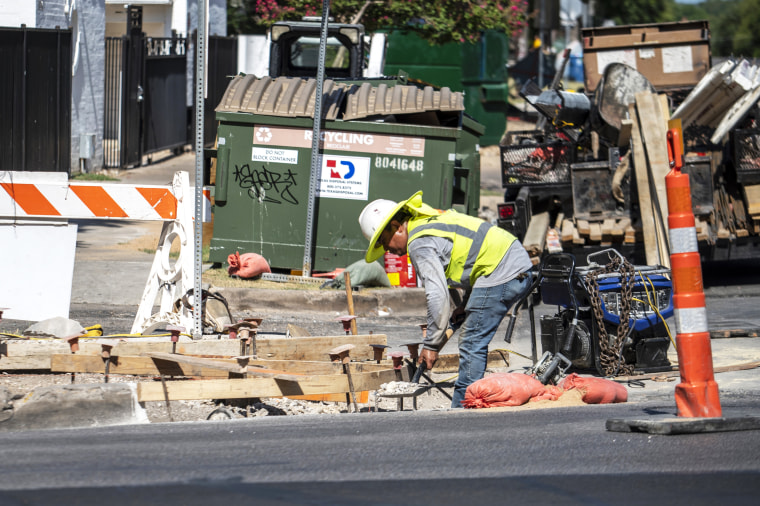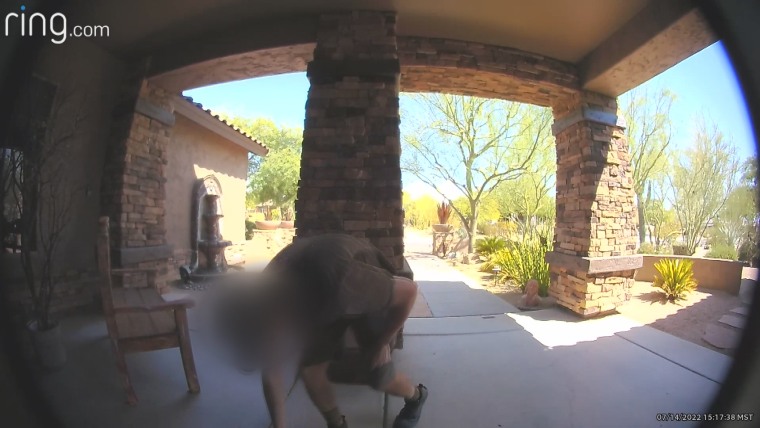OSHA is years away from issuing a federal heat standard that would protect workers. Advocates say it is dire now.

Amid a punishing global heat wave, the U.S. agency that sets workplace safety standards is likely many years away from issuing a federal rule that would protect workers from dangerously high temperatures, experts and a former agency official said.
The Department of Labor’s Occupational Safety and Health Administration began the process of creating such a regulation in October but is bogged down by a lack of resources, strong industry opposition and bureaucratic procedures that can span decades, Jordan Barab, a former OSHA official, said.
“All of those create huge barriers to getting things done in a reasonable time frame,” said Barab, who was OSHA’s deputy assistant secretary of labor in the Obama administration.
The agency is early into its rule-making process, which can take 15 months to 19 years from start to finish and averages more than seven years, according to a report by the U.S. Government Accountability Office.
The report published in 2012 cited procedural requirements, shifting priorities and a rigorous standard of judicial review as the major roadblocks.
“Rulemaking takes time, and it’s critical that we get it right,” OSHA Assistant Secretary of Labor Doug Parker said in a statement.
But advocates say outdoor workers — many of whom are people of color — cannot wait as climate change makes extreme temperatures more likely.
“It’s obvious that the climate is heating up, and workers are at increased risk," Barab said. "That’s getting worse and worse.”
As temperatures surpassed 90 degrees in Pasadena, California, last month, a 24-year-old UPS driver collapsed and died in his truck moments after delivering a package, his family said.
The county’s medical examiner has not yet said what caused the death of Esteban Chavez Jr., but his father blamed the heat and the demands of the job.
“Those trucks are a hot box,” Chavez Sr. told KTLA. “They have all these guys running around, delivering packages and trying to meet their quotas and do their jobs.”
More recently, another UPS worker collapsed in the Arizona heat — a moment captured on a homeowner’s doorbell video camera — but survived. The unidentified worker can be seen slumped over on the ground, seconds after dropping off a package.
UPS did not immediately comment Friday. Earlier this week, in response to the Arizona driver who collapsed, the company said its drivers are “trained to work outdoors and for the effects of hot weather.” It also said air conditioning is “ineffective” in delivery trucks because they make frequent stops.
Many more incidents go unreported as do heat-related work injuries and deaths, said Juley Fulcher, who works with Public Citizen, a nonprofit group that advocates for consumers and workers.
From 2011 to 2019, scorching temperatures led to an average of 38 worker deaths a year, according to the U.S. Bureau of Labor Statistics. In 2019 alone, 43 workers died from heat exposure, and more than 2,400 others suffered serious injuries and illnesses, OSHA said.
But Fulcher said the figures are likely significantly higher because of reporting discrepancies. A recent Public Citizen report found that heat exposure is likely responsible for 170,000 work-related injuries and around 600 to 2,000 deaths each year.
Farmworkers, the vast majority of whom are migrants, are the most vulnerable to heat-related injuries and illnesses, the report said, while construction workers are more likely to die.
Construction workers, who make up 6% of the total U.S. workforce, accounted for 36% of all occupational heat‐related deaths from 1992 to 2016, according to a 2019 report by the Center for Construction Research and Training, an organization that works with OSHA to address construction hazards.
And nearly 90% of landscaping and groundskeeping workers in 2020 were required to spend more than two-thirds of their working time outside, compared to 4% of all civilian workers, according to the Bureau of Labor Statistics.
“A lot more workers are dying in the heat, and it’s not getting recorded that way,” Fulcher said.
'The sweat does not stop'
In Virginia, where temperatures are expected to linger close to 100 degrees this weekend, UPS driver Nick Jones keeps a sweat towel, Gatorade and some watermelon in his delivery truck to keep cool.
Jones, 38, says that when he stops at red lights, he can see visible heat waves through his windshield.
“It’s excruciating,” he said, adding that his truck is not air conditioned. “Nowadays, I’m using the towel every stop because the heat is just so intense. The sweat does not stop.”
end quote from:
https://www.nbcnews.com/news/us-news/osha-years-away-issuing-federal-heat-standard-protect-workers-advocate-rcna39208

No comments:
Post a Comment